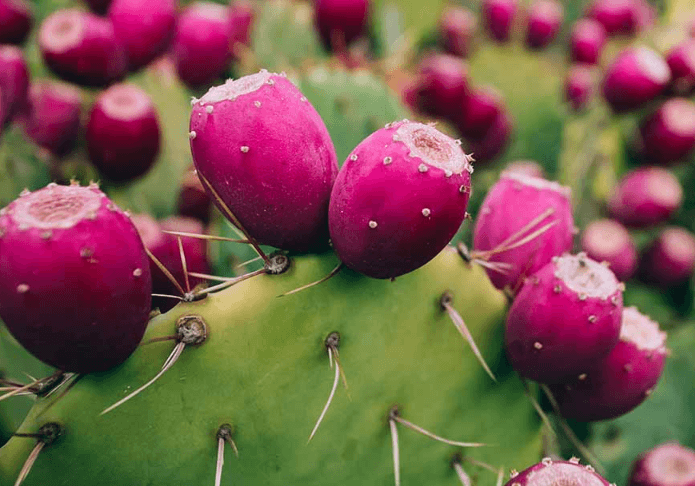
One of the most common cactus genera in the United States is the prickly pear cactus (Opuntia). This plant, which has over 100 species, is distinguished by its spiny, flat, club-shaped pads. While some species have small, detachable barbs that resemble hairs, others have enormous, rounded spines. While cacti are typically thought of as warm-weather desert plants, certain varieties of prickly pear are tolerant of temperatures as low as USDA zone 4. The optimum time to grow prickly pears outdoors is in the spring, after any risk of frost has passed. Although the plant grows slowly and it might take up to three or four years before a new plant begins bearing fruit, some prickly pears are prized for their edible fruits.
Care
Light
The prickly pear grows in direct sunlight as a desert cactus. That entails receiving direct sunlight for at least six hours each day. A west or south-facing window is ideal indoors. Some shade during the daytime in extremely hot climes can prevent scald.

Soil
Any plant in the Opuntia genus needs soil that drains properly as a primary requirement. Although the prickly pear may survive other soil types as long as there is sufficient drainage and not too much water, it grows best in sandy or gravelly soil.
Water
The prickly pear plant prefers dry environments and needs very little water to remain healthy. Because of this, cacti are frequently utilized in low-water gardening. The soil should only be watered every two to three weeks or if it is absolutely dry. Simply mist the soil with water rather than saturating it. A small amount of rainfall is frequently all that is required for the plant.
The soil must be exceptionally permeable and well-draining if prickly pears are to be grown as landscaping plants in areas with heavy rainfall.
Humidity and Temperature
The prickly pear cactus enjoys hot, dry summers in the desert. But many of its species can withstand chilly temperatures well. (Keep in mind that desert nights can get cold.) In general, it thrives in areas with warm winters and hot, low-humidity summers. Even in environments when the temperature is to the plant’s liking, prickly pears might suffer in environments with excessive levels of humidity.
Fertilizer
Unless you have really poor soil, prickly pears rarely need fertilizers when planted in the ground. It will consume the soil’s nutrients more quickly in containers and will need some feeding. The plant may require nourishment if its green pads begin to look dull or if it fails to bloom. During the growing season, you can apply a balanced fertilizers by adhering to the product’s recommendations. You can also decide between a low-nitrogen fertilizers for more blooms and fruits and a high-nitrogen fertilizers for larger pads.
Table





